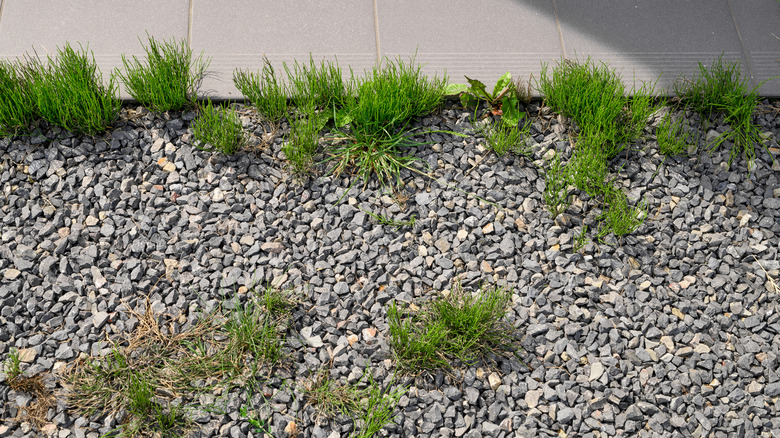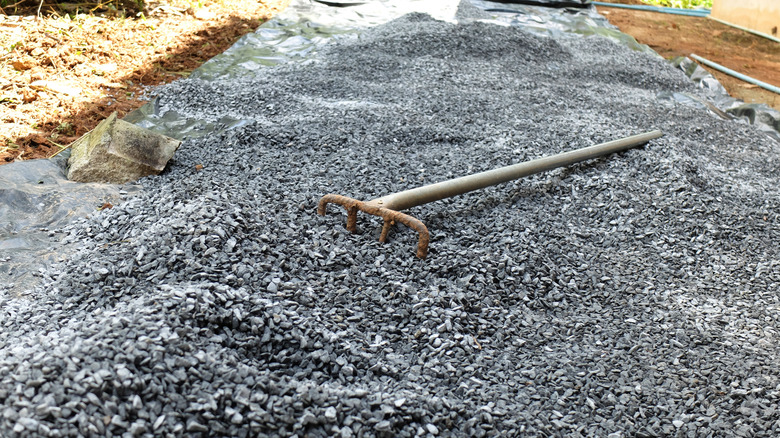The Budget-Friendly Way To Prevent Weeds From Popping Up In Gravel
We may receive a commission on purchases made from links.
If you find yourself constantly fighting weeds in your gravel pathways or driveways, plastic sheeting can offer a surprisingly effective and budget-conscious solution. This method works by creating an impenetrable barrier between the soil and the gravel layer. Unlike landscape fabric, which can allow some weeds to eventually penetrate the material, thick plastic sheeting forms a complete blockage. It takes away the sunlight and prevents weeds from taking root in the ground, stopping the problem before it exists. The installation is incredibly easy — after clearing and leveling the area, unroll the plastic sheeting directly over the soil, overlapping any seams if you're using multiple rolls. Secure the edges with landscape staples or weighted objects, then pick the perfect color gravel for your landscape, and cover the entire area with about 2 to 3 inches of gravel.
The reason this works so well is pretty straightforward. Weeds need three elements to grow successfully: soil, moisture, and sunlight. Plastic sheeting helps eliminate all three by creating a sealed environment where seeds cannot access the soil, while the gravel layer above blocks the light that might filter through. Heavy-duty options, like this Husky 6-mil plastic sheeting, provide extra durability to resist tears from sharper rocks or foot traffic. It is worth noting that this method works best for low-traffic gravel areas like rock gardens and areas where the ground won't be disturbed as often as a gravel driveway might be. You might start to see some weeds popping up, even when using the plastic sheeting. If this happens, you can always try the often overlooked solution for preventing weeds in your gravel — adding more stones.
Weighing the advantages and disadvantages of plastic sheeting
One of the biggest advantages of plastic sheeting as weed prevention is its cost. Compared to landscape fabric, plastic sheeting often comes in a few cents cheaper per square foot. This might not seem like a lot, but when you're covering larger areas, those pennies can add up. Plastic sheeting is also much thicker than standard landscape fabric, giving it a stronger coverage overall. Even thinner plastic sheeting can last up to two years before needing to be replaced, and thicker UV-resistant options can last even longer. Plastic is also great for temporary projects, as the sheets can be easily removed when finished without leaving any permanent changes to the original landscape.
Much like the downsides to using landscape fabric, plastic sheeting comes with its own unique problems. The fact that it's difficult to penetrate, which is great for stopping weeds, hurts proper water drainage. This could lead to puddles during heavy rains, which can eventually erode gravel and create breeding grounds for mosquitoes. This makes plastic sheeting unsuitable for areas with frequent rainfall. The lack of airflow below the sheeting can also create an anaerobic environment that hurts your soil over time, harming beneficial organisms. During installation, special care must be taken around existing plants or trees as the barrier could starve their roots of both water and oxygen if placed too close. If you're an environmentally conscious homeowner, most high-density polyethylene plastics can be recycled easily. However, make sure you do some research before you buy, as certain types require special processing and can't just be taken with regular recycling.

